by Arnie Fenner
Since Spectrum 21 appeared in November and the deadline for entries to Spectrum 22 is a bit over a month away, I thought I’d take this opportunity to talk about the geopolitical risks we’ll be facing in 2015.
I kid.
I’m often asked how Spectrum came about—I’ve recounted the history in print several times—and why Cathy and I handed the reins over to John Fleskes. It’s pretty easy to connect the dots and, in the process, give credit where credit is due. With John now firmly in the driver’s seat, I’m thinking this will probably be the last time I’ll be telling the tale: everybody can now let out a big sign of relief.
Our idea to create an art annual for the fantastic art community came from four sources: Tomorrow and Beyond, a full color image anthology edited by Random House art director Ian Summers in 1978, the Illustrators annuals (which I think began, at least in its present form, in 1956), the “Science Fiction” group exhibition co-curated by Michael R. Whelan and Wayne D. Barlowe in 1984 at the Society of Illustrators’ Museum of American Illustration, and our own desire to see the artists in our field get the recognition their work deserved.
Released by Workman Publishing, Tomorrow and Beyond wasn’t exactly the first anthology of fantastic art—the Ballantines and others had already blazed a trail—but it’s impact was immense. Despite the “masterpieces” subtitle, the book wasn’t even remotely a “best of” compilation and there were many “hot” artists of the time not represented, but it was colorful, energetic, and above all contemporary. This wasn’t a nostalgic look back but a spotlight on what was happening now. Summers essentially pulled samples from the many artist portfolios that crossed his desk and fit them into thematic groupings (SF, fantasy, horror, surreal)—and it seemed to have sold like gangbusters, at least as a Science Fiction Book Club selection (sales to bookstores became a source for controversy). Unfortunately, there wasn’t a sequel.
Spectrum began kicking around in my noggin not long after the Summers book appeared and I had first talked to Michael Whelan about it at Fool Con in 1980. He liked the idea as much as I did, but the “how” was hard to figure out. Looking at Illustrators (and Communication Arts, Graphis, et al) was both inspiring and incredibly intimidating; we talked on-and-off about it as our paths crossed in the following years, but we never seemed to be able to answer the “how?” question.
The Illustrators annuals were the preeminent showcase for commercial artists, the home of Rockwell, Bama, English, Fuchs, Peak, McCarthy, and McGinnis. It always included a smattering of fantasy and SF art in some form (Don Punchatz, John Berkey, and Brad Holland were always well represented—even Frazetta appeared from time to time), but the fantastic genre was never dominant and often seemed over-shadowed by the mainstream subjects. Which was understandable, honestly: f&sf was (and is) only a portion of what’s produced and printed each year and Illustrators welcomed it all. Mysteries, Westerns, history, romance, humor, product advertising, and everything in between clamored for the same juror’s vote. There were—and still are—other art annuals, but Illustrators always had the style, the panache, and the reputation that everyone admired: making it into the book was a big deal. It still is. But it was also that small representation of fantastic art in the annual at a time when the numbers of creators were growing that helped solidify the belief that a book for “our own” was justified, too. Not as a challenge to or replacement of the status quo, but as an addition.
The Society always hosted exhibitions of one sort or another, but when Young Guns Michael Whelan and Wayne Barlowe proposed a show of science fiction art it wasn’t exactly an easy sell. There were skeptics that needed convincing. Despite the global success of Star Wars and the appearance of fantasy or science fiction novels on the New York Times bestseller list with growing regularity, some still considered genre work as “kid’s stuff” and not worth taking seriously. Forward thinkers prevailed—and besides, what better time to have an SF art show than in 1984? Michael has expressed some disappointment that they were persuaded to expand the show’s theme to include works of horror and fantasy as well, but it’s hard to argue with the excitement it generated when it opened. If it wasn’t exactly the first museum exhibit—the New Britain Museum of American Art in Connecticut hosted “Science Fiction and Fantasy Painters” in 1980—it was certainly the biggest and most comprehensive. And everyone loved it: illustrators both in and out of genre, educators, students, collectors, fans, and casual visitors all enthused. The exhibit created a huge buzz in the field: there had never been such an expansive gathering of f&sf artists and artists in one place at one time before.
Unfortunately, there wasn’t a book or catalog to chronicle the show.
The Association of Fantasy & Science Fiction Artists was founded in 1985 and began giving out the Chesley Awards. Under the initial leadership of Carl Lundgren, I think the basic model was the Science Fiction Writers of America guild. ASFA’s original intent and goals were/are worthwhile, but it has struggled through the years to attract and retain members. Early on we had included several pages devoted to the Chesley winners in Spectrum as a courtesy, but it began to confuse readers into thinking that either ASFA was responsible for Spectrum or Spectrum was responsible for ASFA, so we discontinued the practice. Some years later (in 2003) there was one retrospective book devoted to the award winners edited by John Grant and, unfortunately—a recurring word in this post so far—it included art that was either wonderfully or terribly reproduced (and when I say something is printed badly, woof, it really has to be bad). Also unfortunately, it almost led to a lawsuit for breach of contract and caused a lot of family consternation for the Frazettas (that I may or may not talk about sometime): there hasn’t been another collection since.
So…no annual book as a regular focal point, a lack of some sort of visible community, encouragement from Michael Whelan, a respect and admiration for other organizations and their accomplishments, a genuine love for the field, and a desire to grow the awareness and recognition of fantastic art and the people who create it…were the motivations behind the creation of Spectrum.
It wasn’t easy. I shopped the idea around (and even had an agent at one point), but it was an expensive project (color art books were still fairly rare and pretty pricey), nobody really knew me from Adam, and it wasn’t exactly a book that resonated or fit with most publishers’ lines. I heard, “Who would want something like this?” more than once. What seemed logical to me didn’t seem so to others. I had been art directing for Mark Ziesing Books on the side and almost struck a deal to partner with Mark, but he didn’t have national distribution and I saw little purpose in getting artists involved with a book that relatively few would see (his press runs rarely exceeded 2000 copies). Cathy and I were both working at Hallmark and we were rehashing the potential of a fantastic art annual for the umpteenth time during lunch one day, when in frustration Cathy finally said, “Let’s stop talking about it and do it ourselves.”
That was the tipping point. I had published books and knew the basics so, while a bit scary, I was pretty sure we could pull it off, at least once. Win, lose, or draw, Cathy felt that doing something was better than doing nothing and I agreed. We pooled our money, bought mailing lists, and started promoting. I had been doing some design work for Underwood/Miller and when I mentioned what we were planning to do to Tim Underwood (who had just split with Chuck Miller to form a stand-alone imprint) he offered to step in as publisher. Tim’s participation changed the scope of the project and significantly increased the chances of success. Rick Berry came up with the title “Spectrum”; Rick, Dave Stevens, Tim Kirk, and Don Ivan Punchatz provided art for a Call For Entries poster…and the rest is history.
Flash forward to 2013. We opened the second Spectrum Fantastic Art Live with an announcement that Spectrum 20 would be our last as editors and that John Fleskes would step into the role of both editor and publisher. Many were surprised, but it was something we had been planning for a number of years.
The reason? Because Spectrum is about the artists and the fantastic art community as a whole, not about Cathy and me. As Cathy said recently, “After twenty years we wanted to make sure Spectrum would continue to do its ‘job’: to chronicle the best fantasy and SF art created in the past year, to provide recognition for the artists, and to celebrate the community as a whole. Spectrum has to be vibrant and ‘fresh.'” I had joked periodically with Irene Gallo about dropping Spectrum lock, stock, and barrel in her lap, but knew that as great as she’d be running the show her responsibilities at Tor filled up her days and she wouldn’t have the enormous amount of extra time the competition and book requires. But we were always thinking about the future and when we first met John at a San Diego Comicon we immediately knew he would bring that freshness and enthusiasm that would help Spectrum maintain its position and grow in the years ahead. His books impressed us almost as much as John did in person; we shared the same ethics, the same love for the field, the same sense of responsibility, the same goals. The more we got to know him, the more convinced we became that he should become the next editor/director/administrator; we blindsided him with the proposal at dinner one evening and, luckily for us (and everyone, truthfully), he agreed.
It was surprisingly easy to hand the competition and annual over to John after twenty years. Because we trust him.
The first competition under his directorship and the release of Spectrum 21 shows that our confidence was well-placed. We didn’t see the book—didn’t want to see the book—until it was finished. And we weren’t disappointed. John placed his own stamp on Spectrum while honoring its traditions. He continued producing the increasingly expensive Call For Entries poster because he respected the concept of an artifact, a keepable symbol, of an event (I imagine pros and students putting up the posters above their drawing boards like I would do with the Illustrators posters). He continued the policy of providing free copies to artists despite escalating production and shipping costs. And most significantly he continued the practice of bringing the jury physically together to judge rather than have them vote in isolation from home via the internet: sure, it would save money, but it would also allow for less-than-thoughtful ballots. When a jury meets together, they’re invested in the results; conversation and compromise become a part of the process. Respect for each other, for the entrants, and for the field is always evident in the results. It’s honest.
The resulting book, of course, is gorgeous. With the artists included, there’s no way it couldn’t be. The added editorial content, artist photos, and expanded coverage of each category’s award winners have been mildly controversial for some reason (manufactured drama when there is none, I guess), but we love them. Everything that increases the recognition and appreciation of the artists and our field is a positive and that’s precisely what John’s additions have accomplished. Everything that heightens the concept of a fantastic art community has value.
Because it is community that’s at the core of Spectrum, as it always has been. Spectrum is family. There are divisive folks who feign support for artists while simultaneously picking their pockets: that’s not Spectrum. Spectrum has always given back, to the many not the select few. As I mentioned earlier with regards to the Society of Illustrators, what Spectrum has tried to do for the last twenty years is add to the conversation, not dominate it, not to take it over. It’s an attempt to bring all artists with an interest in fantastic art together, regardless of methodology or philosophy, with the goal to help broaden the market and overall appreciation for what they do. To increase networking and educational opportunities, to help provide a welcoming sense of place, without artificial class barriers, prejudice, or pretension.
There has been fussing through the years about the increase and inclusion of digital art, fussing about the trend of “dark art,” fussing about…well, you name it, somebody has fussed about it. But that’s the nature of being inclusive: not everyone is happy about everything all the time. But there’s strength for our community when we’re unified under a single banner; it’s too easy, far too tempting, to splinter off into like-minded hives formed under specious definitions and arbitrary criteria. Spectrum’s view has never wavered in twenty-one years: art is art and all artists are equal. It doesn’t matter how they create or what they use or where they’re from: Spectrum is a home.
I’m proud to say a lot of positive things have grown from that first book 21 years ago. Like what? Well…
• Spectrum has become an invaluable sourcebook art directors and art buyers around the world use to find new talent and keep abreast of the field. Numerous artists report getting commercial work, teaching engagements, and private commissions (and selling originals and reproductions) as a result of appearing in the book. Spectrum has the largest circulation of any art annual currently being produced.
• Spectrum was the first competition to give each participant with work included in the annual a copy of the book (surprising, I know, but it’s still not a common practice).
• Spectrum was the first annual to devote categories to comics and dimensional art.
• Spectrum was a leader in providing a showcase for international creators to the American market.
• When there have been licensing opportunities presented to Spectrum—like the 2009 Calendar—the artists shared equally in the financial proceeds. There will be more such opportunities in the future.
• Spectrum has championed artists’ rights and on more than one occasion confronted infringers through counsel on the behalf of creators.
• Spectrum has given a number of scholarships to young artists, including to students at the Columbus School of Art and Design, the Kansas City Art Institute, the Illustration Master Class, and through the Society of Illustrators Student Scholarship Fund.
• Spectrum sponsored three high-profile exhibitions (curated by Irene Gallo and Greg Manchess) at the Museum of American Illustration, to date the largest, most representative, and best-attended museum shows for the fantastic arts yet mounted.
• Spectrum helped with the production of the Frank Frazetta documentary Painting With Fire and became Executive Producer of Better Things: The Life and Choices of Jeffrey Catherine Jones.
• The success and visibility of Spectrum helped promote the interest in fantastic art as a whole, leading to many other books from various publishers and eventually artist-focused conventions.
• John Fleskes has launched a series of artist interviews, demonstrations, and instructional videos that he makes available free of charge via the Spectrum website.
• Spectrum Fantastic Art Live furthers Spectrum’s long-held belief in community by welcoming all artists without artificial restrictions or prejudice toward medium or methodology with the purpose of promoting the artists and the fantastic arts to the public. As a non-profit, expenses for exhibiting or attending artists are kept deliberately low; all show revenues go toward paying for the event and making it enjoyable for everyone. And the presentation of the Spectrum awards in a theater setting provides a high-profile event that sends a positive message to observers.
That’s really sort of the tip of the iceberg: Spectrum’s influence has been felt by many. In good ways.
The transition from our directorship to John’s is now complete…but it’s really just the beginning. John has many exciting plans in the works, each of which will benefit artists everywhere in the years ahead. There will be some announcements at Spectrum Fantastic Art Live in May that I think will excite everyone. And of course the deadline for Spectrum 22 is right around the corner. For Spectrum to continue to do its job, it needs the community to pitch in and make it possible. As I’ve said often through the years, each book can only be as good as the people who enter; it can only benefit all if all participate. Opportunities for individuals stem from growing the awareness for all; each participant is equally important whether they have work selected by the jury or not. Which is what being part of a community is all about.
Spectrum respects the past, celebrates the present, and embraces the future. I’m not blowing smoke when I say: with John Fleskes as director, the best is yet to come.
And us? What will Cathy and I be doing? Oh…we have a few things in the works…


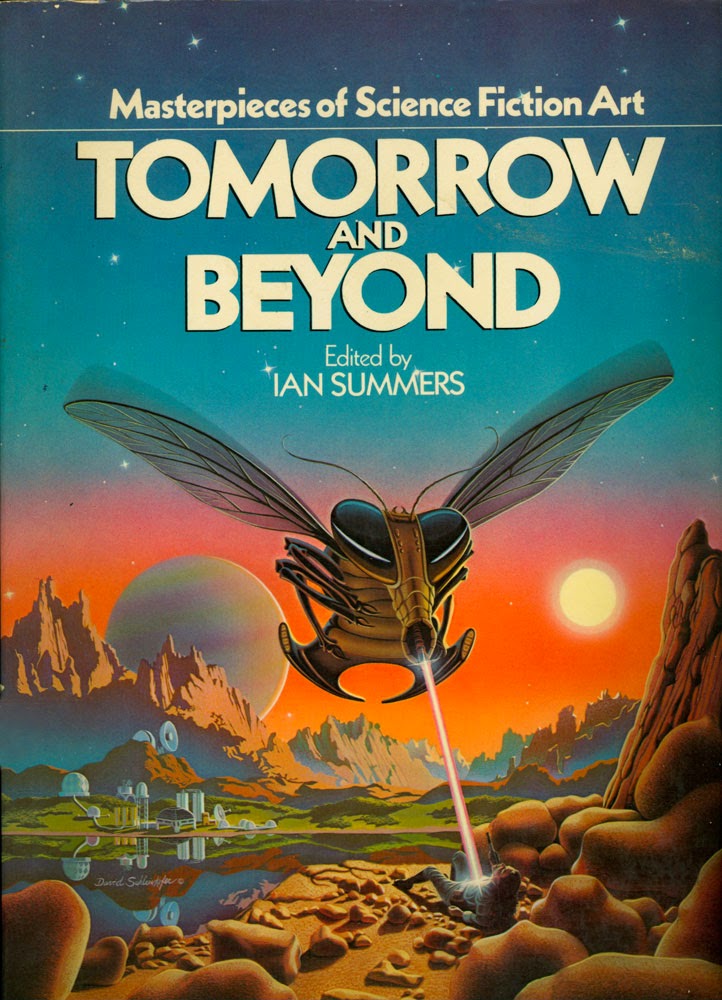


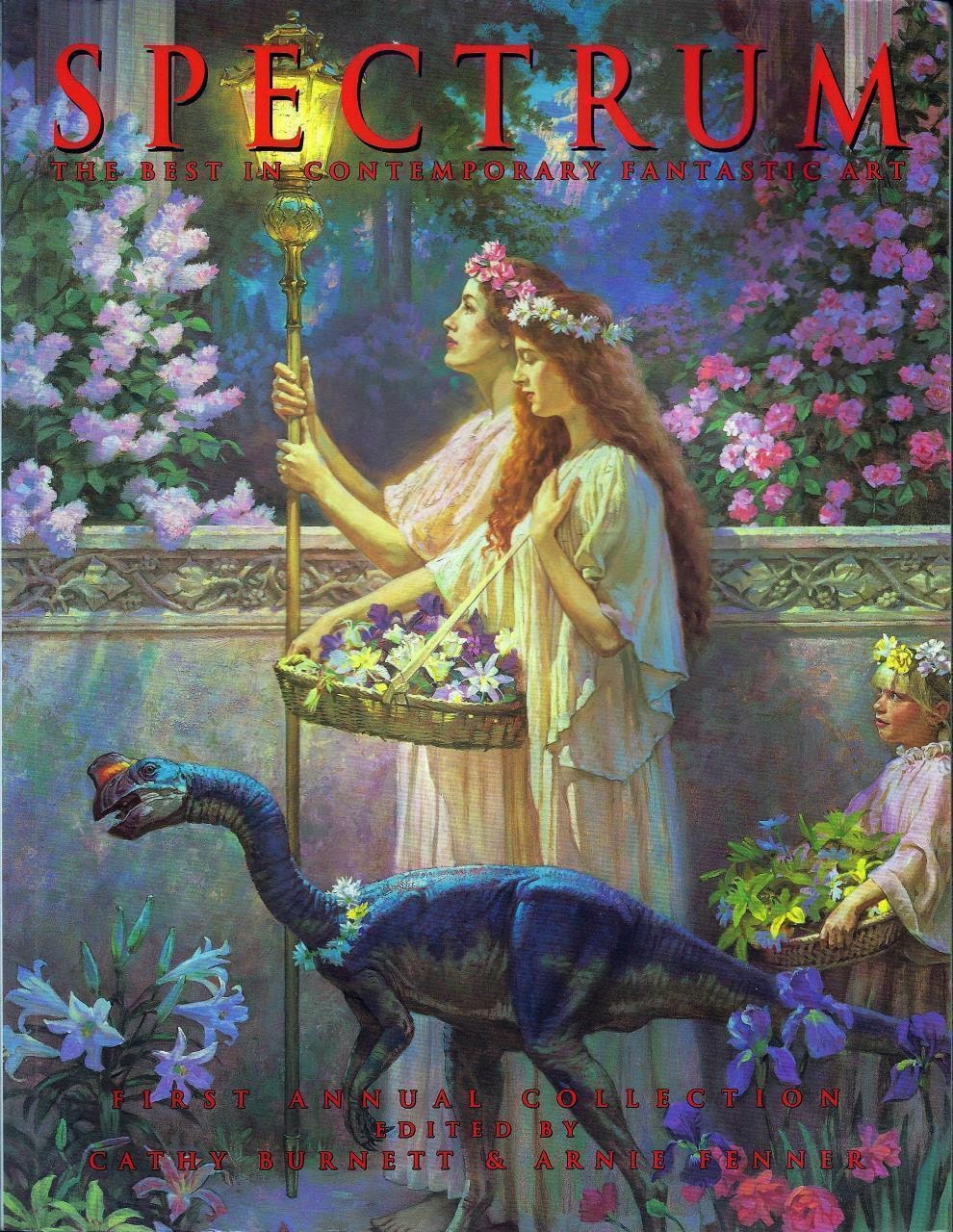



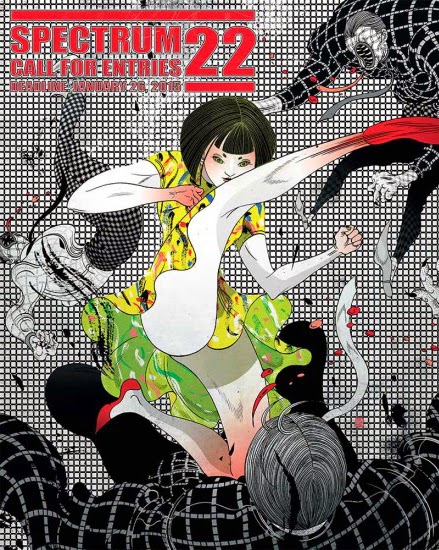
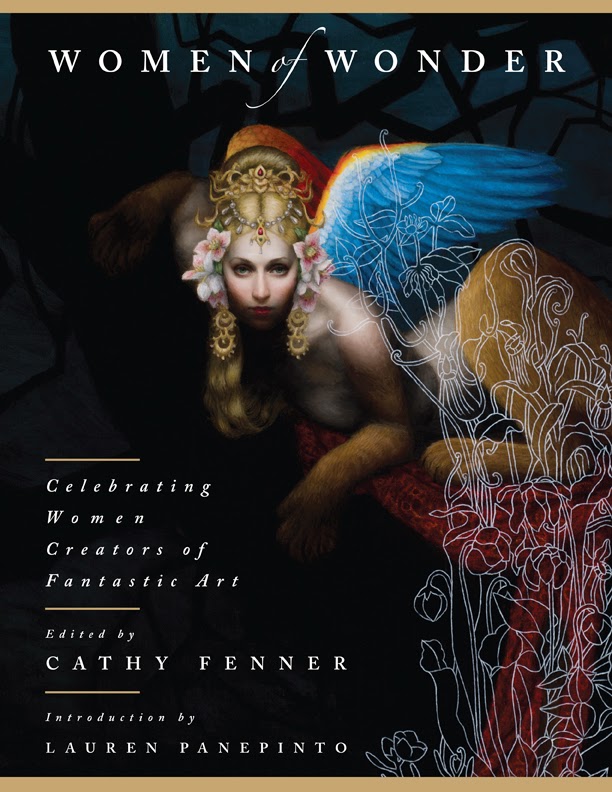
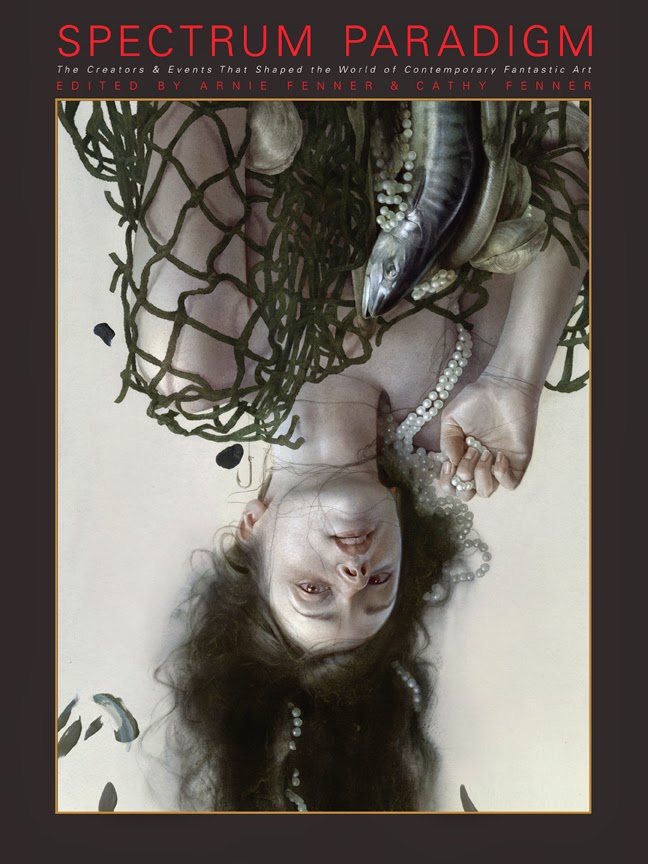

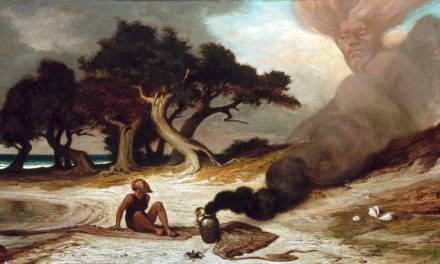
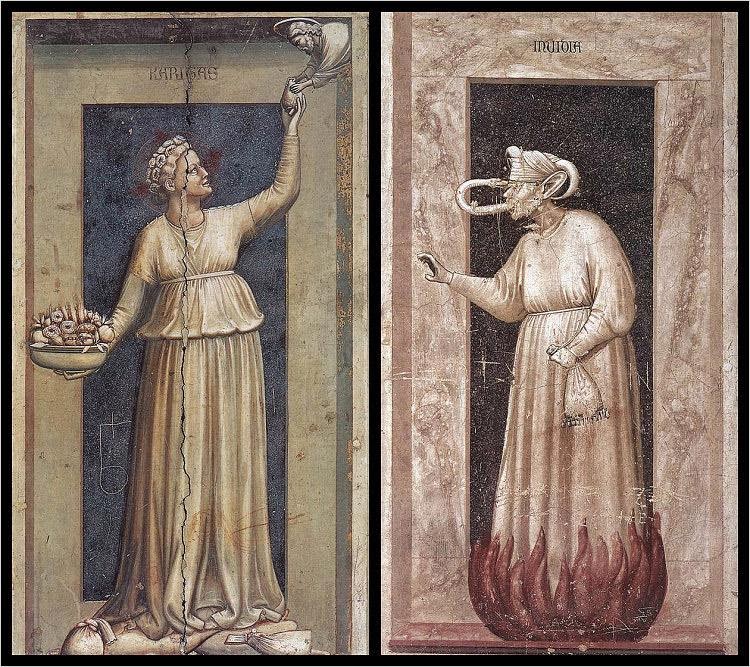
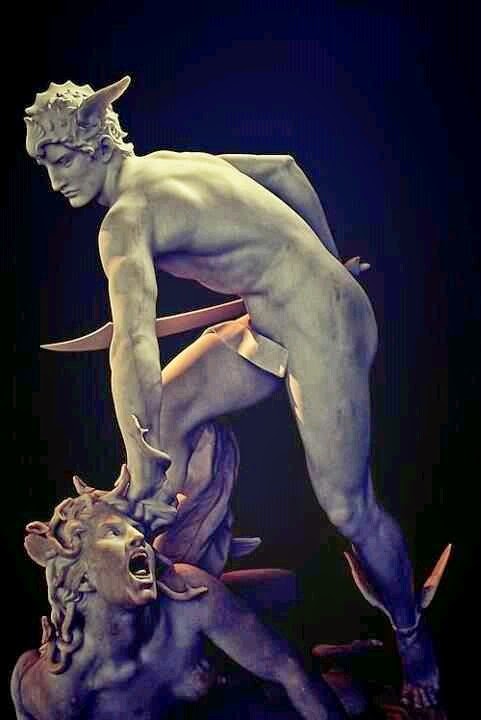
Just great Arnie. A little choked up.
Thanks for posting! I bought a copy of Tomorrow and Beyond when it first came out – very inspiring.
I'll never grow tired of hearing this story Arnie and Cathy. It reinforces the principle to chase after your dreams, and it is through that passionate pursuit that they come to life and live within others!
The first time I saw a copy of Spectrum… I knew it would be here to stay. I kept telling Art Directors, “You gotta see this annual”! Cathy and Arnie – thank you for your many years of dedication and support of the artists and genres that have appeared in the Spectrum Annuals. Your positive contributions will be part of the fantastic art landscape for years to come.
I look forward to your future ventures and plans.
yer pal-
John
I received my first Spectrum as a Christmas gift about 10 years ago. It has been on my christmas list ever since, including this year!
Thanks for the nice comments, everyone. Something else I wanted to mention was that Spectrum led to many wonderful friendships for Cathy and me. A gift that keeps on giving. 🙂